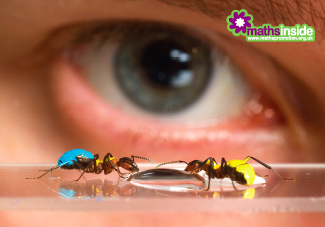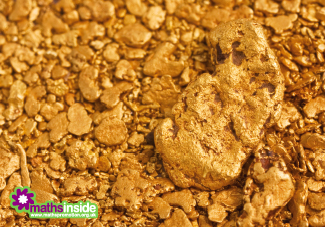
The maths inside
This year the Royal Society celebrates its 350th anniversary and Plus is joining in the celebrations. The annual Royal Society Summer Science Exhibition is this year part of a festival called See Further: The Festival of Science + Arts, which explores the links between science and the arts. The festival is taking place at the Southbank Centre in London from the 25th of June to the 4th of July 2010.
Plus is contributing to the exhibition with the Maths Inside project. The project is run by the Mathematics Promotion Unit (a collaboration between the London Mathematical Society and the Institute of Mathematics and its Applications) in conjunction with Plus and the Royal Society. It aims to reveal the wealth of mathematical tools and concepts that scientists use in their research. We have chosen four exhibits of the Royal Society Summer Science Exhibition and produced leaflets that reveal the "maths inside". If you can't make it to the exhibition to pick up your very own set of leaflets, you can download them here and read our accompanying articles:

How do insects find their way home? — how vector maths gets bugs home safely
When insects go foraging, they zoom off from their nest in complex zig-zag paths. How do they manage to find their way back home? And how do they manage to do so along a straight path?

Shining a light on gold — the optical properties of gold nanoparticles
People have been using gold particles dispersed in water — gold hydrosols — for medical purposes for over 1000 years. Recently, hydrosols containing gold nanoparticles have become particularly popular because they have exciting potential in medicine. But how do you measure the size and concentration of such tiny particles?

Water is essential for life on Earth, and it is a resource we all take for granted. Yet it has many surprising properties that have baffled scientists for centuries. Seemingly simple ideas such as how water freezes are not understood because of water's unique properties. Now scientists are utilising increased computer power and novel algorithms to accurately simulate the properties of water on the nanoscale.

Fat body slim — how maths can get inside your body.
Obesity has reached epidemic proportions and the World Health Organisation estimates that, by 2015, about 3 billion adults will be overweight or obese worldwide. These individuals will be at increased risk of cardiovascular disease, type 2 diabetes, cancer and osteoarthritis. To understand the effects of obesity, researchers have built an ingenious device based on simple equations.
You can find out about more maths in the Summer Science Exhibition in The serious mathematics of cereal, socialising and starlings. And if you'd like to try out some of the maths behind the science, visit our sister site stemNRICH.
 |
 |
 |
